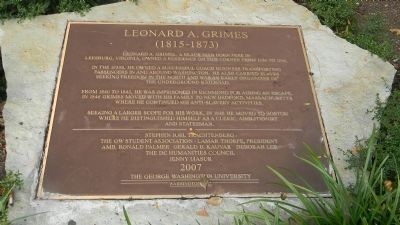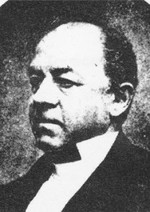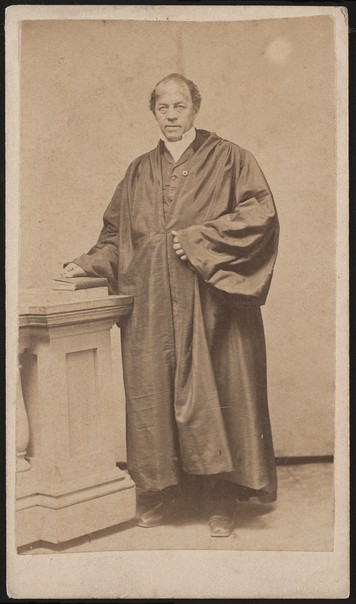Leonard A. Grimes Historical Marker
Introduction
Text-to-speech Audio
Images
Marker at the location of the home Leonard A. Grimes shared with his wife and children.

Leonard A. Grimes- abolitionist and driver for the Underground Railroad successfully transported fugitive slaves to the North.

Leonard Grimes was an ordained minister for the Twelfth Baptist Church which was home to many freed and fugitive slaves.

Backstory and Context
Text-to-speech Audio
Leonard Andrew Grimes was born to free parents on November 9, 1815, in Leesburg, Virginia. He became an orphan at ten years old and was sent to live with his uncle. His life there was not a good one and he refused to return. He moved to Washington D.C. and had several jobs during the beginning of his time there. He first worked as a butcher’s boy and a clerk at an apothecary before he was eventually hired by a slaveholder. During his employment with the slaveholder, he became his trusted confidant and traveled the south with him.
It was during this employment and travel that he witnessed the beating of an enslaved woman and started him on his path of resistance. When they returned from that trip he was able to help with his first escape. An abused slave fled to his employer’s plantation and he helped her begin her escape to Canada. Grimes then used his savings to buy a couple of stagecoaches and horses and became a successful hackman. He grew his business by transporting paying clients of the city while using his stagecoaches as transportation for fugitive slaves through the Underground Railroad.
He married in 1833 and purchased a home with his wife in 1836. This marker is located at the site of the house they owned until 1846. While living in Virginia he continued working with the Underground Railroad until he was caught. In 1839 he helped a female slave escape to the North with her children and was arrested for his role several months later. In 1840 he was sentenced to a $100 fine and two years of hard labor.
After he was released from prison they moved to New Bedford, Massachusetts but did not give up his anti-slavery efforts. In 1848 Grimes and his family moved to Boston, Massachusetts where he became the ordained minister of the Twelfth Baptist Church, which became known as The Fugitive Slave Church. One of the notable action he took during his time here was to take in fugitive slave Anthony Burns in 1854. When Burns was arrested Grimes helped lead his fight in court but the judge ordered Burns return to the slaveholder from whom he escaped. Grimes turned to another method and raised enough money to purchase his freedom and free Burns from slavery.
Grimes continued his quest to abolish slavery by helping slaves escape to the North. When the Civil War started, he added campaigning to allow Black men to enlist in the military to fight for their rights. His, and others, efforts were successful in 1863 when the 54th Massachusetts Infantry, one of the first Black troops was created. Leonard A. Grimes passed away on March 14, 1873, after a sudden illness.
Sources
Leonard Grimes. National Park Service. September 14, 2017. Accessed September 15, 2018. https://www.nps.gov/people/leonard-grimes.htm.
Stevens, Charles Emery. Anthony Burns A History: Electronic Edition.. Documenting the American South. . Accessed September 20, 2018. https://docsouth.unc.edu/neh/stevens/stevens.html.
